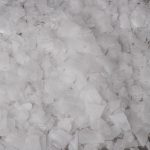Carbon Black is a commercial form of solid carbon that is consisting mainly of carbon in various carbon particles (differences at particle size, aggregate size, shape, porosity and surface chemistry). Also typically contains less than 5% with minimal quantities of oxygen, hydrogen and nitrogen. Carbon Black particles are between 10 nm to approximately 500 nm in size, which define the structure of individual Carbon Black grades.
Smaller particle size increases tensile strength, abrasion resistance and reduces rebound and dispersibility. Higher structure increases modulus, hardness, viscosity, dispersibility and reduces die swell. Higher porosity increases tear strength, conductivity and reduces rebound. Higher surface activity increases abrasion resistance, rebound and modulus.
Packing
- Poly Bag
- Carton Box



